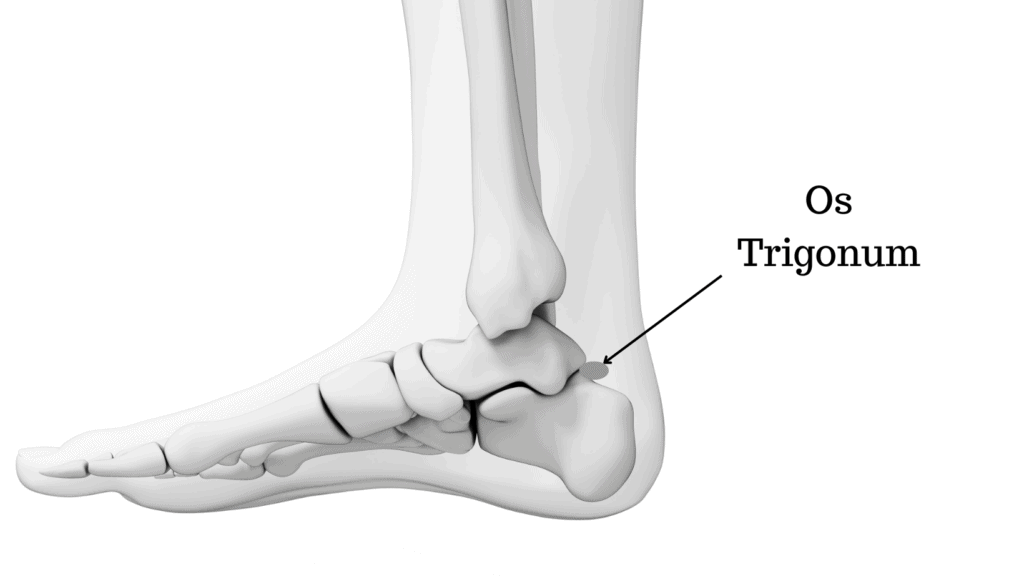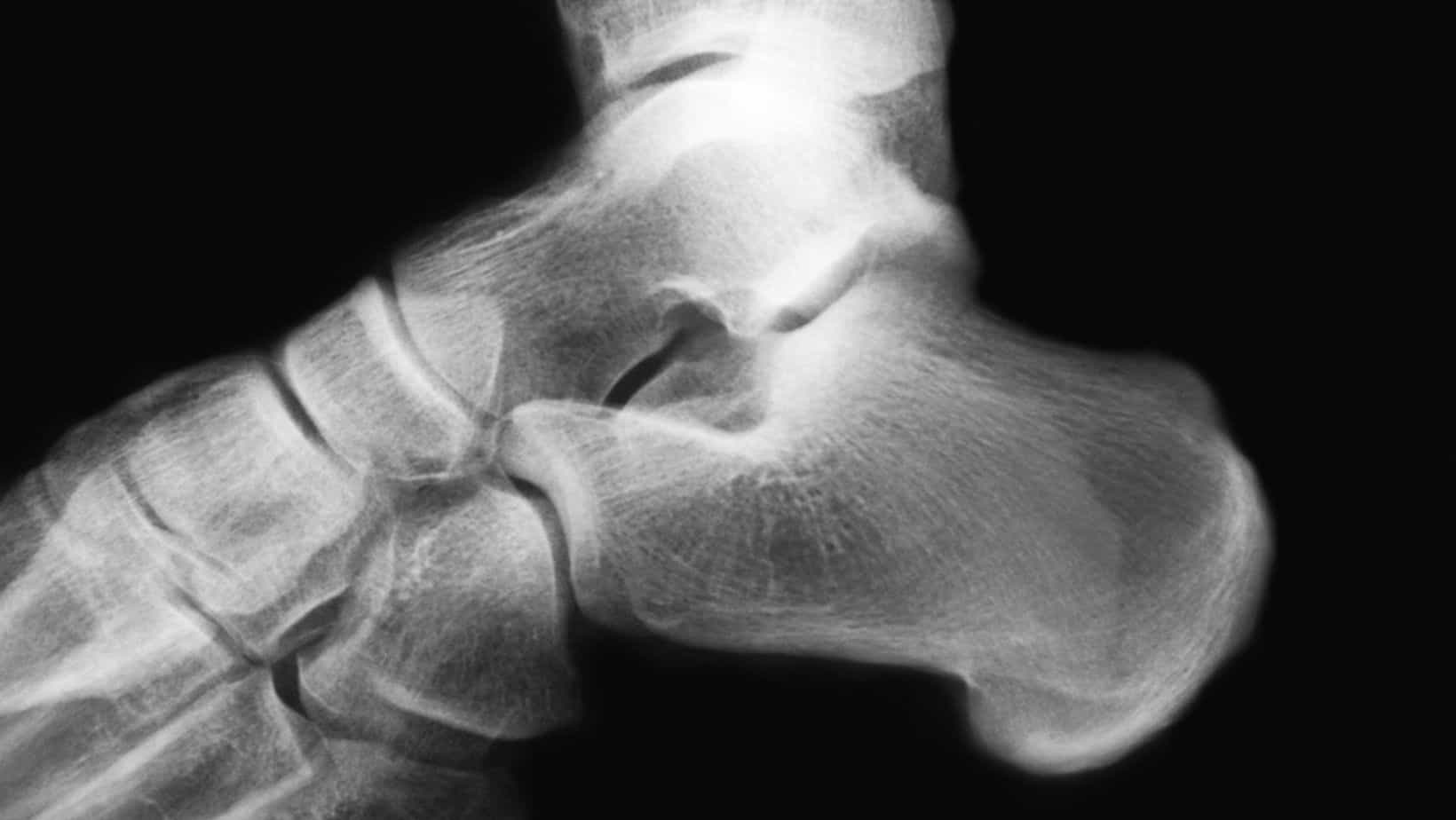Posterior Ankle Impingement (PAIS)
Read More >
Os Trigonum is an extra bone that forms at the back of the ankle between the Achilles Tendon and the Talus Bone. It is often misdiagnosed as Achilles Tendonitis with one of the key differences being that Os Trigonum pain is worse with terminal plantarflexion but should improve when the foot moves into dorsiflexion.
Approximately 5-15% of the population have an Os Trigonum; most of these may go their entire lives without knowing they have one. However, in some cases, if this accessory bone becomes overloaded and irritated, it can lead to inflammation in the back of the ankle and is known as Os Trigonum Syndrome or Posterior Ankle Impingement.

The symptoms of Os Trigonum include heightened pain in terminal plantarflexion in non-weight bearing as well as weight-bearing activities such as heel raises, pointe, and walking downhill.
Symptoms should improve with dorsiflexion; in irritable cases, there may be some swelling at the back of the ankle.
Os Trigonum syndrome is caused by sudden overload or repetitive impact applied to the back of the ankle from jumping, heel raises, or downhill walking.
Risk factors of Os Trigonum syndrome include ballet, dancing, and running.
Other causes of pain at the back of the ankle:
A clinical diagnosis of Os Trigonum syndrome is difficult as it is not possible to palpate the accessory bone. A Physical Therapist or a Podiatrist can diagnose a posterior ankle impingement based on a patient’s symptoms and a Posterior Ankle Impingement Test.
To identify the cause of a Posterior Ankle Impingement, an x-ray may be requested, which can diagnose an Os Trigonum. In some cases, an MRI may be requested to identify other soft tissue structures that may be involved.

Home treatment can be very effective in the initial instance for Os Trigonum Syndrome, including ice, rest, anti-inflammatories, and avoiding terminal plantar flexion.
Physical Therapy can identify muscular imbalances and gait modifications contributing to the pain, while a comprehensive rehabilitation plan consisting of strengthening, stretching, and balance exercises are highly effective. These can be accompanied by advice on footwear and insoles.
In some cases, the hindfoot is too irritable to improve with Physical Therapy, and in those cases, a corticosteroid injection under ultrasound guidance is highly effective at reducing inflammation levels. In some cases, spending a couple of weeks in a walker boot may be recommended to allow the injection to take maximum effect.
In rare cases, surgical removal of the Os Trigonum is required. This is a highly successful surgery, but it should be a last resort.
This is not medical advice. We recommend a consultation with a medical professional such as James McCormack. He offers Online Physiotherapy Appointments.
Related Articles: